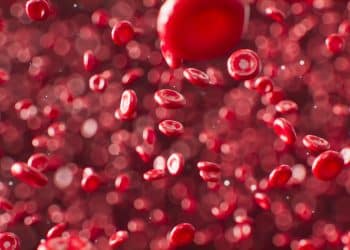
The causes of anemia and how to accurately identify it will be covered for delegates. Upon completion of the course, participants will also be able to recognize blood results.
Ask a Group Question
The purpose of this anemia training course is to assist workers in gaining a deeper comprehension of anemia.
They will learn how to distinguish between the numerous forms of anemia and how it affects people’s physical and mental health.
We’ll help you find the right course for your needs. Tell us a little bit about your situation and what you would like to achieve.
We’ll get back to you within one working day.
We can deliver this training at your premises, as long as it’s within the UK. Also, we have our own venues in UK if you need access to a training room (additional charges will apply). We can also deliver this training virtually using Zoom. However, sessions delivered via Zoom will be theory only and will not include any practicals.
One of our expert clinical tutors. These are either Nurses or Doctors with abundant clinical and complex care experience and knowledge – so you’ll be in great hands! We will let you know who is doing the training in advance. You can check out their skills and experience by finding them on our meet the team page.
Anemia is a disease that develops when the body does not produce enough red blood cells, which are essential for delivering oxygen to the tissues. It may significantly affect a person’s emotional and physical well-being. Training on anemia awareness is essential for fostering improved health outcomes. Increased awareness prompts prompt interventions that significantly enhance the quality of life for anemia sufferers. The purpose of this anemia training course is to give learners a better understanding of anemia and the skills necessary to manage and help patients who are suffering from this illness. Anemia affects over 40% of children aged 6 to 59 months, 37% of pregnant women, and 30% of women aged 15 to 49 worldwide, according to estimates from the World Health Organization (WHO)..
On completion of the course, you will be able to:
There will be two to three hours of training. We allow for a range of time to take into consideration changeable aspects including reduced delegate numbers, class interaction and participation, and the delegates’ underlying knowledge and competency. One of these explanations will apply if a course ends before the scheduled time. But our trainer will make sure that every learning objective has been reached.
Simply put, no. You cannot gain complete competency with a classroom-based training program; be extremely skeptical of anyone who makes such a claim. Our in-class evaluations are intended to close the knowledge gap between the classroom and the workplace. We will make sure you have access to the appropriate workbooks and competency proformas, which must be completed and signed off on in accordance with your local policy at work.
This training is for anyone working within the health and social care sector.
We will deliver this training for a group of up to 12 delegates. For larger groups we can either provide multiple trainers on the same day or run multiple days to get everyone trained.
We have a variety of different training equipment and tools available. The training will be relevant and transferable. However, if you have a specific requirement for a particular type of equipment, please make this clear during the booking process, and the team will ensure this is provided.
Alternatively, we can use your own equipment for training.
Anaemia is when a person’s blood doesn’t have a sufficient amount of healthy red blood cells. These cells are responsible for delivering oxygen to different parts of the body. When there aren’t enough of these cells, the body doesn’t get the oxygen it requires. This can result in feelings of weakness, tiredness, dizziness, and the person’s skin might appear pale. It’s comparable to not having enough workers to carry out an important task within the body.
The symptoms of anemia can vary but commonly include:
Aplastic Anaemia is a rare and serious condition where the bone marrow doesn’t produce enough blood cells. This includes red and white blood cells, as well as platelets. This leads to fatigue, infections, bleeding, and other health risks. It can be caused by factors like autoimmune disorders, medications, toxins, and infections. he causes of aplastic anemia can be diverse, including autoimmune disorders, certain medications, exposure to toxins, radiation, and viral infections. In some cases, the cause remains unknown, and the condition is referred to as idiopathic aplastic anemia. Prompt diagnosis and appropriate treatment are crucial in managing aplastic anemia. Treatments may include medications to stimulate bone marrow function, blood transfusions, immunosuppressive therapies to suppress the immune system’s attack on the bone marrow, and in some cases, bone marrow transplantation.
Anemia in adults can stem from:
Prompt diagnosis aids effective treatment. Consult a healthcare professional if anemia is suspected.
Anemia is a condition characterized by a deficiency of red blood cells or a decrease in the hemoglobin content of the blood, resulting in reduced oxygen-carrying capacity.
There are several types or classifications of anemia, each with its own specific causes and characteristics. Here are some common classes of anemia:
As I have told others… It is the best, most informative training I have ever attended